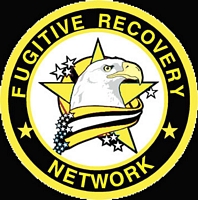http://www.wuwm.com/post/step-step-guide-bounty-huntingWhat would bounty hunting look like if made legal here in Wisconsin?
Within the field of law enforcement, bounty hunting exists at one end of the bell curve - except in Wisconsin, where it currently doesn't exist at all.
That might have changed in the current budget, were it not for the veto pen of governor Scott Walker. But bounty hunting still has some chance of becoming legal in Wisconsin. While Walker twice vetoed that proposal in the state budget, he says he would consider it as separate legislation.
But you don't have to travel far to get a glimpse of what bounty hunting in Wisconsin might look like - in fact you only have to go as far as Minnesota.
Derek Nelson is president of the Bail Bond Association of Minnesota. He also works as a bond agent for A-Alliance Bail Bonds, issuing money for bail and as a bounty hunter, tracking down fugitives, as an owner for Guardian Fugitive Recovery LLC.
He explains the step-by-step process of apprehending a fugitive by describing a case.
1. Receiving the case
Nelson says his team was looking for an individual from central Minnesota who didn't show up to face drug charges and possible firearm charges. Nelson's first step was to speak with the court administrator about the case. He also looked for any cases in other counties the individual might be wanted to face.
2. Background check
Nelson then conducted a criminal background check to ascertain the individual's history - in this case, he had a history of drugs, violence and theft, but not violence crimes.
3. Searching out a residence
Talking with local law enforcement helps Nelson identify known residences. Most of that information comes from bail bond documents that the individual completes before being released from custody. In this case, however, Nelson wasn't able to get an exact address.
"He was knowingly running from law enforcement, knowingly running from the courts, and had no intention of being found and we actually did receive reports from people we did encounter, he was trying to acquire as much money as he could so he could leave state," Nelson says.
4. Interviewing associates
Nelson and his team talked with police who had encountered the individual in other instances, past associates and family to determine a general location.
"What resulted is almost 72 hours straight of living in our car, sitting on addresses, floating through different neighborhoods, and at the same time working with local law enforcement so they knew not only where we were but the areas they were looking in, so they too during their standard patrols could also keep their eyes open," Nelson explains.
5. A sighting
While "sitting on properties," Nelson says he saw a "very suspicious looking individual" also driving around the area his team was searching in. After notifying law enforcement, Nelson's team followed the car into an obscured driveway. There, Nelson saw the defendant exit the back of a barn and cross the property.
6. Making contact
"It wasn't a big elaborate 'we jump out of the car running at him, yelling or screaming,'" Nelson says. "It was simply I had one vehicle pull behind him, I pulled in front, I stepped out and said, 'You are under arrest, you missed court.'"
Nelson identified who he was and the defendant gave up without a fight or struggle. Nelson put the man into custody and gave him an opportunity to say goodbye to a friend.
7. To the jail
After the individual surrendered, Nelson contacted law enforcement, who asked if he needed assistance. In this case, the defendant was not putting up a fight, so no police intervention was needed. Nelson brought the man to jail and surrendered him to jail staff, where he was searched and held until his court appearance.
"That's typically how a lot of these cases work," Nelson says. "It is a lot of sitting, a lot of waiting, a lot of talking with people and working with law enforcement, and once we find the person, I'd say 9 times out of 10, they throw their hands up and say, 'Okay you got me.'"




